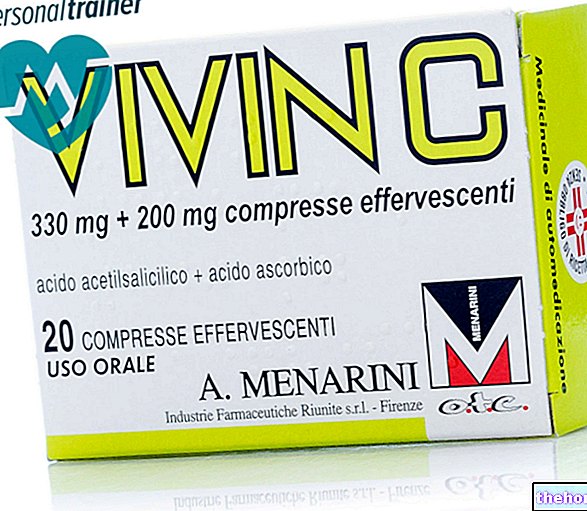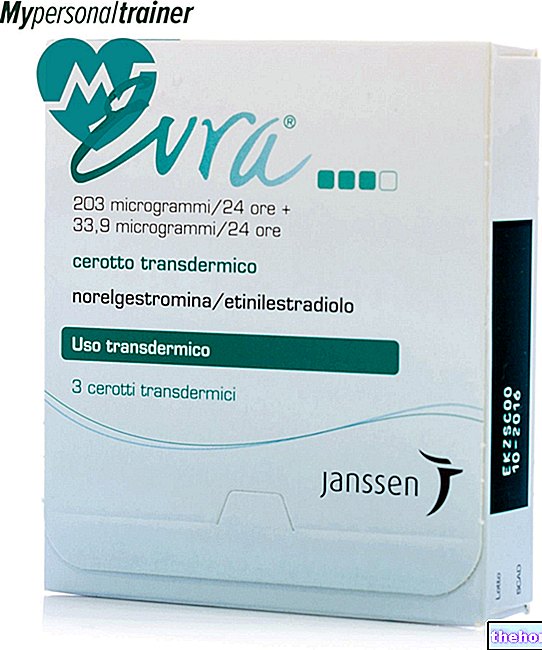Active ingredients: Vitamin E (alpha-tocopherol)
ARMILLA 400 I.U. soft capsules
Why is Armilla used? What is it for?
Pharmacotherapeutic group
Vitamin preparations, not associated
Therapeutic indications
Vitamin E deficiencies linked to malabsorption. Conditions in which the prevention of excessive cellular lipid peroxidation is required.
Contraindications When Armilla should not be used
Known hypersensitivity to the components of the product.
Precautions for use What you need to know before taking Armilla
Since vitamin E reduces the need for digitalis, in case of simultaneous intake of the two drugs, attention should be paid to "possible hyperdigitalization. Insulin dosages in diabetics treated with vitamin E must be carefully controlled, since vitamin E can considerably reduce the need for insulin (see also section "Interactions").
Prolonged use of doses above 800 mg per day has been associated with an increased bleeding tendency in patients with vitamin K deficiency. Excessive use of vitamin E can antagonize vitamin K function and should be under close supervision. .
Therapeutic use of tocopherol is associated with an increased risk of hemorrhagic stroke.
Interactions Which drugs or foods can modify the effect of Armilla
Tell your doctor or pharmacist if you have recently taken any other medicines, even those without a prescription. High doses of vitamin E (1200 I.U.) can interfere with warfarin, resulting in a transient increase in bleeding time. Vitamin E can enhance the action of digitalis and insulin.
Concomitant use of anticoagulants, thrombolytics, or inhibitors of platelet aggregation or haemostasis may increase the risk of bleeding.
High doses of α-tocopherol can reduce the absorption of vitamin A and vitamin K.
Warnings It is important to know that:
Use in pregnancy and during lactation
Ask your doctor or pharmacist for advice before taking any medicine.
During pregnancy and lactation the product should only be used under strict medical supervision due to the high dosage of alpha-tocopherol in the medicine.
In the event that the use of the medicinal product is necessary, the risk / benefit ratio for both the mother and the child must be considered, and the treatment must be adapted according to the serum tocopherol levels.
Ability to drive cars and use machines
The drug does not alter the state of alertness.
Dose, Method and Time of Administration How to use Armilla: Dosage
400 mg (1 capsule) per day.
Overdose What to do if you have taken too much Armilla
In case of accidental ingestion / intake of an excessive dose of Armilla, notify your doctor immediately or go to the nearest hospital.
In case of overdose it is possible the appearance of gastrointestinal disorders (nausea, diarrhea), fatigue, muscle weakness.
Symptoms and signs of tocopherol overdose are non-specific. Transient gastrointestinal disturbances such as nausea, diarrhea, flatulence have been reported with daily dosages greater than 1 g. Other symptoms may include fatigue, asthenia, headache, blurred vision and dermatitis. If overdose is suspected, treatment should be discontinued. Where necessary, general supportive measures should be taken.
Chronic phenomena of hypervitaminosis are not known E.
Side Effects What are the side effects of Armilla
Like all medicines, Armilla can cause side effects, although not everybody gets them.
After taking high dosages, fatigue and muscle weakness may appear.
Adverse reactions arise from spontaneous reports and therefore it is not possible to establish their frequency.
Disorders of the immune system
Allergic reaction, anaphylactic reaction. Symptoms may include hives (secondary mechanism), allergic edema, dyspnoea, erythema, rash and boils. If an allergic reaction appears, stop treatment and consult a doctor.
Gastrointestinal disorders
Diarrhea, abdominal pain, epigastric pain, nausea, flatulence.
Skin and subcutaneous tissue disorders
Skin rash, itching.
Compliance with the instructions in this leaflet reduces the risk of side effects.
Reporting of side effects
If you get any side effects, talk to your doctor or pharmacist. This includes any possible side effects not listed in this leaflet. You can also report side effects directly via the national reporting system at http://www.agenziafarmaco.gov.it/it/responsabili. By reporting side effects you can help provide more information on the safety of this medicine.
Expiry and Retention
Expiry: see the expiry date printed on the package. The expiry date refers to the product in intact packaging, correctly stored.
Warning: do not use the medicine after the expiry date indicated on the package.
Medicines should not be disposed of via wastewater or household waste. Ask your pharmacist how to throw away medicines you no longer use. This will help protect the environment.
KEEP THE MEDICINAL PRODUCT OUT OF THE REACH AND SIGHT OF CHILDREN
Composition and pharmaceutical form
Composition
One capsule contains:
Active principle:
RRR-α-Tocopherol oil solution mg 400 (equal to 400 I.U. of vitamin E).
Excipients:
refined soybean oil.
Constituents of the capsule:
gelatin, glycerol.
Pharmaceutical form and content
Soft capsules. Box of 30 capsules of 400 I.U.
Source Package Leaflet: AIFA (Italian Medicines Agency). Content published in January 2016. The information present may not be up-to-date.
To have access to the most up-to-date version, it is advisable to access the AIFA (Italian Medicines Agency) website. Disclaimer and useful information.
01.0 NAME OF THE MEDICINAL PRODUCT
ARMILLA 400 I.U. SOFT CAPSULES
02.0 QUALITATIVE AND QUANTITATIVE COMPOSITION
One capsule contains:
Active principle: RRR-α-Tocopherol oil solution 400 mg (equal to 400 I.U. of vitamin E).
For the full list of excipients, see section 6.1.
03.0 PHARMACEUTICAL FORM
Soft capsules.
04.0 CLINICAL INFORMATION
04.1 Therapeutic indications
Vitamin E deficiencies linked to malabsorption. Conditions in which the prevention of excessive cellular lipid peroxidation is required.
04.2 Posology and method of administration
400 mg (1 capsule) per day.
04.3 Contraindications
Hypersensitivity to the active substance or to any of the excipients listed in section 6.1.
04.4 Special warnings and appropriate precautions for use
Since vitamin E reduces the need for digitalis, in case of simultaneous intake of the two drugs, attention should be paid to "possible hyperdigitalization. Insulin dosages in diabetics treated with vitamin E must be carefully controlled, since vitamin E can considerably reduce the need for insulin (see also section 4.5).
Prolonged use of doses above 800 mg per day has been associated with an increased bleeding tendency in patients with vitamin K deficiency. Excessive use of vitamin E can antagonize vitamin K function and should be done under close supervision. .
Therapeutic use of tocopherol is associated with an increased risk of hemorrhagic stroke.
04.5 Interactions with other medicinal products and other forms of interaction
High doses of vitamin E (1200 I.U.) can interfere with warfarin, resulting in a transient increase in bleeding time. Vitamin E can enhance the action of digitalis and insulin
Concomitant use of anticoagulants, thrombolytics, or inhibitors of platelet aggregation or haemostasis may increase the risk of bleeding.
High doses of α-tocopherol can reduce the absorption of vitamin A and vitamin K.
04.6 Pregnancy and lactation
During pregnancy and lactation the product should only be used under strict medical supervision due to the high dosage of alpha-tocopherol in the medicine.
In the event that the use of the medicinal product is necessary, the risk / benefit ratio for both the mother and the child must be considered, and the treatment must be adapted according to the serum tocopherol levels.
04.7 Effects on ability to drive and use machines
The drug does not alter the state of alertness.
04.8 Undesirable effects
After taking high dosages, fatigue and muscle weakness may appear.
Adverse reactions arise from spontaneous reports and therefore it is not possible to establish their frequency.
Disorders of the immune system
Allergic reaction, anaphylactic reaction. Symptoms may include hives (secondary mechanism), allergic edema, dyspnoea, erythema, rash and boils. If an allergic reaction appears, stop treatment and consult a doctor.
Gastrointestinal disorders
Diarrhea, abdominal pain, epigastric pain, nausea, flatulence.
Skin and subcutaneous tissue disorders
Skin rash, itching.
Reporting of suspected adverse reactions
Reporting of suspected adverse reactions occurring after authorization of the medicinal product is important as it allows continuous monitoring of the benefit / risk balance of the medicinal product. Healthcare professionals are asked to report any suspected adverse reactions via the national reporting system. "address https://www.aifa.gov.it/content/segnalazioni-reazioni-avverse.
04.9 Overdose
In case of overdose it is possible the appearance of gastrointestinal disorders (nausea, diarrhea), fatigue, muscle weakness.
Chronic phenomena of hypervitaminosis are not known E.
Symptoms and signs of tocopherol overdose are non-specific. Transient gastrointestinal disturbances such as nausea, diarrhea, flatulence have been reported with daily dosages greater than 1 g. Other symptoms may include fatigue, asthenia, headache, blurred vision and dermatitis. If overdose is suspected, treatment should be discontinued. Where necessary, general supportive measures should be taken.
05.0 PHARMACOLOGICAL PROPERTIES
05.1 Pharmacodynamic properties
A11HA03 - Other non-associated vitamin preparations.
Vitamin E carries out its main activity as a physiological antioxidant of lipid structures and as a stabilizer of cell membranes; it is therefore an adjuvant drug in the treatment of various clinical manifestations related to toxic-oxidative vulnerability of biomembranes.
Vitamin E, as a biological antioxidant, protects other substances, such as vitamin A, from oxidative inactivation.
05.2 "Pharmacokinetic properties
Vitamin E is absorbed in the intestine following the same mechanisms as fat-soluble substances. Consequently, below normal tocopherolemia values were found in subjects with hepato-pancreatic disorders.
Bioavailability ranges from 20 to 40%. The vitamin circulates in the plasma bound to lipoproteins. It is found in all tissues, especially cell membranes.
Vitamin E is poorly metabolized. Its elimination occurs mainly via the biliary route.
In the urine some metabolites have been found consisting of glucuronidated compounds of tocopherolic acid and its gammalactone.
05.3 Preclinical safety data
Acute toxicity studies found that the highest dose without toxic effects, administered orally in mice, rats and dogs, was 50,000 mg / kg, 5,000 mg / kg and 320 mg / kg, respectively.
Repeated oral administration for 19 consecutive weeks was also well tolerated by the rat for doses up to 100 mg / day.
06.0 PHARMACEUTICAL INFORMATION
06.1 Excipients
Refined soybean oil.
Constituents of the capsule: gelatin, glycerol.
06.2 Incompatibility
None.
06.3 Period of validity
4 years.
06.4 Special precautions for storage
No particular conditions.
06.5 Nature of the immediate packaging and contents of the package
The soft capsules are contained in PVC-PVDC blisters welded to a sheet of aluminum lacquered with PVDC.
Packaging:
ARMILLA 400 I.U. 30 soft capsules
06.6 Instructions for use and handling
07.0 MARKETING AUTHORIZATION HOLDER
ABIOGEN PHARMA S.p.A.
Via Meucci, 36 Ospedaletto - Pisa
08.0 MARKETING AUTHORIZATION NUMBER
ARMILLA 400 I.U. soft capsules - 30 capsules AIC n. 035596028
09.0 DATE OF FIRST AUTHORIZATION OR RENEWAL OF THE AUTHORIZATION
April 2004 / April 2009
10.0 DATE OF REVISION OF THE TEXT
November 2014




























